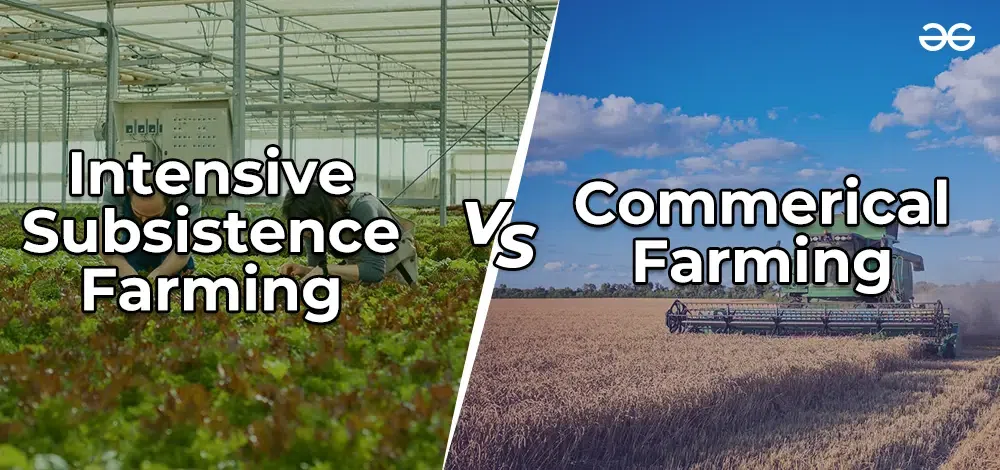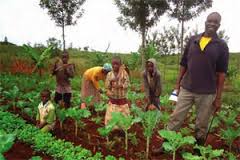Checking Out the Key Differences Between Commercial Farming vs Subsistence Farming
Checking Out the Key Differences Between Commercial Farming vs Subsistence Farming
Blog Article
Discovering the Distinctions Between Commercial Farming and Subsistence Farming Practices
The duality between business and subsistence farming practices is marked by differing goals, operational ranges, and resource usage, each with extensive effects for both the atmosphere and culture. Conversely, subsistence farming stresses self-sufficiency, leveraging conventional techniques to sustain house needs while supporting community bonds and cultural heritage.
Economic Purposes
Financial purposes in farming techniques usually determine the approaches and scale of operations. In commercial farming, the main economic objective is to optimize earnings. This requires a focus on effectiveness and productivity, achieved via advanced innovations, high-yield crop selections, and extensive usage of fertilizers and chemicals. Farmers in this model are driven by market demands, intending to create large amounts of assets available for sale in international and nationwide markets. The focus is on achieving economies of range, guaranteeing that the price each result is minimized, therefore raising productivity.
In comparison, subsistence farming is mostly oriented in the direction of satisfying the instant needs of the farmer's household, with surplus production being very little - commercial farming vs subsistence farming. While industrial farming is profit-driven, subsistence farming is centered around sustainability and strength, mirroring an essentially various collection of financial imperatives.

Scale of Workflow
The distinction in between business and subsistence farming ends up being especially apparent when thinking about the range of procedures. Business farming is characterized by its massive nature, commonly encompassing comprehensive systems of land and utilizing advanced machinery. These operations are normally incorporated into global supply chains, creating large amounts of crops or livestock meant up for sale in residential and international markets. The range of industrial farming permits economic climates of range, causing minimized prices per device through mass production, raised performance, and the capability to purchase technical developments.
In stark contrast, subsistence farming is typically small-scale, concentrating on creating just sufficient food to fulfill the immediate needs of the farmer's family members or local area. The acreage involved in subsistence farming is often limited, with much less access to modern innovation or automation. This smaller range of operations mirrors a dependence on standard farming strategies, such as manual work and straightforward tools, leading to reduced productivity. Subsistence ranches focus on sustainability and self-sufficiency over revenue, with any type of excess usually traded or bartered within regional markets.
Resource Use
Source utilization in farming practices discloses substantial distinctions in between industrial and subsistence approaches. Commercial farming, defined by large procedures, often uses sophisticated innovations and automation to maximize the use of resources such as land, water, and plant foods. These practices allow for improved effectiveness and higher performance. The emphasis gets on taking full advantage address of outcomes by leveraging economic situations of scale and deploying resources purposefully to make sure consistent supply and productivity. Accuracy farming is increasingly embraced in business farming, utilizing data analytics and satellite technology to keep an eye on plant wellness and optimize resource application, additional improving yield and resource performance.
In comparison, subsistence farming operates on a much smaller scale, mostly to fulfill the immediate demands of the farmer's house. Resource application in subsistence farming is frequently restricted by financial restraints and a dependence on conventional strategies.
Environmental Impact

On the other hand, subsistence farming, exercised on a smaller range, generally employs standard methods that are a lot more in harmony with the surrounding environment. Crop turning, intercropping, and organic fertilization are typical, advertising soil wellness and useful source reducing the requirement for artificial inputs. While subsistence farming typically has a lower ecological impact, it is not without obstacles. Over-cultivation and bad land monitoring can cause soil erosion and deforestation in many cases.
Social and Cultural Implications
Farming practices are deeply intertwined with the social and social fabric of areas, influencing and showing their values, traditions, and financial structures. In subsistence farming, the focus gets on cultivating sufficient food to satisfy the immediate requirements of the farmer's household, usually fostering a strong feeling of community and shared obligation. Such techniques are deeply rooted in regional customs, with expertise gave via generations, thus protecting social heritage and strengthening common ties.
Alternatively, business farming is primarily driven by market needs and earnings, typically leading to a change towards monocultures and massive operations. This method can bring about the erosion of typical farming practices and social click this link identities, as regional customizeds and expertise are replaced by standard, industrial approaches. The focus on effectiveness and profit can in some cases lessen the social cohesion located in subsistence neighborhoods, as financial purchases replace community-based exchanges.
The dichotomy between these farming methods highlights the wider social effects of agricultural selections. While subsistence farming supports social continuity and neighborhood interdependence, commercial farming lines up with globalization and economic development, frequently at the price of typical social structures and multiculturalism. commercial farming vs subsistence farming. Stabilizing these aspects stays a vital challenge for lasting agricultural advancement
Final Thought
The exam of commercial and subsistence farming methods discloses considerable differences in goals, scale, resource usage, ecological effect, and social effects. Business farming prioritizes revenue and effectiveness through large-scale procedures and progressed innovations, frequently at the cost of environmental sustainability. On the other hand, subsistence farming highlights self-sufficiency, utilizing neighborhood sources and conventional methods, thus promoting cultural preservation and neighborhood cohesion. These contrasting strategies highlight the intricate interaction between financial growth and the requirement for eco lasting and socially comprehensive farming methods.
The dichotomy in between business and subsistence farming techniques is marked by differing objectives, operational scales, and resource application, each with extensive effects for both the atmosphere and society. While commercial farming is profit-driven, subsistence farming is centered around sustainability and resilience, showing a basically various set of economic imperatives.
The difference between business and subsistence farming comes to be especially obvious when taking into consideration the range of operations. While subsistence farming supports social continuity and area connection, business farming lines up with globalization and economic growth, frequently at the expense of conventional social structures and social variety.The exam of business and subsistence farming techniques reveals considerable distinctions in goals, range, source use, environmental effect, and social ramifications.
Report this page